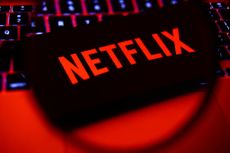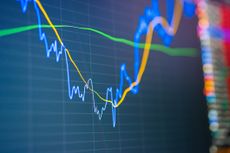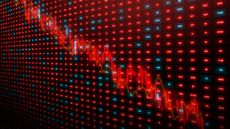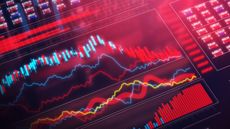Where to Put Your Money Now: Our 2020 Midyear Investing Outlook
The market is finding its way in a changed landscape. Our advice: Tilt toward stocks rather than bonds and cash, and favor U.S. over international holdings.


The road map has changed a lot since our last investing outlook six months ago. As we hunkered down at home, COVID-19 brought the financial markets and our economy to a crashing halt. The longest bull market in history came to an end, and a bear market emerged in record time, with companies’ prospects for the future largely determined by the impact of the coronavirus and their financial wherewithal to withstand it.
What may have surprised most was how resilient the market has been, given the grave economic situation. By mid May, more than 38 million people had lost their jobs. April retail sales and industrial production recorded the steepest monthly drops on record. Restaurants, retailers and movie theaters have filed for bankruptcy, and dozens of companies have suspended or cut their dividends as they husband resources in an attempt to survive.) Oil prices collapsed on fears that global demand would stagnate before recovering some. “We’re looking at an extremely deep recession, deeper than 2008 to 2009, the worst since the Great Depression,” says IHS Markit chief economist Nariman Behravesh. “No question, this downturn is horrific.”
But the stock market reminded investors that it always looks ahead—in this case, beyond the economic chasm to a post-COVID recovery. After falling 34% from its February peak through March 23, Standard & Poor’s 500-stock index pivoted to an unprecedented 30%-plus rebound. But some market experts worry that the rally has gotten ahead of itself. Investors, understandably, are wondering if the second half of 2020 will be off to the races or back to the depths. We think the U.S. market will tread a middle ground between the two.

Sign up for Kiplinger’s Free E-Newsletters
Profit and prosper with the best of expert advice on investing, taxes, retirement, personal finance and more - straight to your e-mail.
Profit and prosper with the best of expert advice - straight to your e-mail.
In our January outlook, we said it was reasonable to expect the S&P 500 to reach a level somewhere between 3200 and 3300 at some point in 2020. The broad-market index reached 3386 on February 19, and we don’t think it will hit that level again this year. More likely is a year-end finish for the S&P 500 of 2900 to 3000. The midpoint of that range is close to where the market traded in May, and it works out to an 8.7% price decline for the calendar year. Our projection also leaves the Dow Jones industrial average close to its mid-May point at year-end—say, in the neighborhood of 24,400. This forecast includes the expectation of a market correction following the explosive spring rally that could take the S&P 500 down to 2650 or perhaps lower. (Prices and returns are through May 15, when the S&P 500 closed at 2864.)
In other words, we’re looking at a volatile market that may make little progress as measured by the indexes—but that shouldn’t dissuade you from positioning your portfolio for gains in a post-pandemic future. “Just because the market may not go anywhere for the next six, 12 or 18 months doesn’t mean there aren’t really good investment opportunities,” says David Giroux, head of investment strategy at investment firm T. Rowe Price.
Investors can prosper as we emerge from the downturn by finessing a fine line between defensive plays—but not too defensive—and stocks and sectors that are more sensitive to the economy—but not too sensitive. Your best bet is to maintain a high bar for quality holdings, without paying the sky-high stock prices commanded by companies with the very best balance sheets. And take advantage of emerging post-pandemic investment themes.
An economic alphabet
This is a market more challenging than most investors are used to, especially given how murky the usual crystal balls are. Economists debate, with little agreement, whether the recovery will take the shape of a V (dramatic bounce back), U (prolonged bottom as the economy gradually reopens), W (up and then back down, possibly after another wave of the virus, or L (stuck at low levels as safety concerns limit activity). Or a math symbol: “We agree with the square root sign,” says Behravesh, “an uptick that fades away.”
Following a first-quarter decline in gross domestic product of just under 5% annualized, Behravesh sees a drop of close to 37% in the second quarter before things pick up in the second half, for a full-year decline in economic growth of 6.4%. Unemployment, recently running at a 14.7% rate, is likely to top out in the third or fourth quarter at 17% or higher, says Behravesh. “This all assumes that the pandemic peaks sometime in July or August and a gradual opening up of the economy continues. If this virus comes back, even this bleak picture is not bleak enough,” he says.
Given the epidemiological and economic uncertainties, many companies have withdrawn the guideposts they usually furnish about how their businesses are faring. That makes estimating corporate earnings—the engine that drives stock prices—particularly precarious. “We’re operating somewhat blindly,” says Phil Orlando, chief stock strategist at investment firm Federated Hermes. The level of earnings might be tough to pinpoint, but the direction is unquestionably down. Wall Street analysts project earnings for companies in the S&P 500 overall to be 22.6% lower than 2019 earnings, according to research firm Refinitiv, with profits plunging the most for energy firms, companies that make or sell nonessential consumer goods (including restaurants, retailers and entertainment firms), and industrials. It could take until the second half of next year or until even 2022 to get back to 2019 earnings levels.
Hamstrung by falling revenues and shrinking profits, more than 50 stocks have suspended or reduced their dividends. Goldman Sachs forecasts that payouts will fall by more than 20% this year (others predict less). Corporate spending to maintain or upgrade buildings, equipment and the like will drop by 27%, Goldman predicts.
Strong underpinnings
Dire circumstances notwithstanding, the market has some strong underpinnings in the form of massive monetary and fiscal stimulus. “The Federal Reserve, with Congress’s help, stopped the bear market squarely in its tracks,” says Jim Stack, president of market research firm InvesTech Research. The Fed cut short-term interest rates to 0%, although Fed governors insist negative rates are not in the cards. Central Bankers and the federal government have injected more than $5 trillion combined into the financial markets and the economy so far, says Stack, and trillions more could be coming. “At the same time, the economic challenges remain formidable,” he says.
Experts also wonder if we’ll pay for spending now with an uptick in inflation later. Shifting political winds toward populism, nationalism and de-globalization are also likely inflationary, says stock strategist Mike Wilson at Morgan Stanley, and together with deficit spending and expected weakness in the dollar “are creating the most convincing case for a return of inflation we’ve seen in some time,” he says. For now, the deflationary effects of a recession—and longer term, the ongoing technological revolution and aging demographics—will temper the risk of spiraling price hikes. Kiplinger expects an inflation rate of just 0.3% at the end of 2020, far below last year’s 2.3% rate.
What once was the market’s biggest wild card, the U.S. presidential election, has taken a backseat to the pandemic. “If new infections grind lower, we put this brutally ugly second quarter behind us and show growth in the third quarter with people working and the stock market back up, that’s good for Trump’s reelection,” says Federated’s Orlando. “If there’s an unexpected second wave, another shutdown and recession runs into next year, we’re looking at President Biden.” Orlando will be watching the stock market’s performance in the three months leading up to the election. If the market is up, the incumbent tends to win; if it’s down, the opposition is usually victorious. Going back to 1928, the indicator is 87% accurate.
Regardless of the election outcome, some hot-button issues have cooled considerably, given the economic situation, says stock strategist Jeffrey Buchbinder at LPL Financial. “I see no appetite for increasing the corporate tax rate,” he says. Similarly, we won’t see tariff increases in the deepest recession we’ve seen since the 1930s.”
Where to invest
Tilt toward stocks rather than bonds and cash, and toward U.S. instead of international holdings—although in a diversified portfolio you’ll own all these assets, and your personal situation will dictate to what extent. Fixed-income investors will have to learn to live with low rates, with the Fed unlikely to raise short-term rates for years and the 10-year Treasury yield, recently 0.64%, inching toward 1% by year-end. “Maybe my 2-year-old will see 3% on a Treasury yield in his lifetime,” quips chief strategist Brian Nick at investment firm Nuveen. You’ll find better opportunities outside the Treasury market—in U.S. agency-backed mortgage securities, for example, high-quality corporate bonds or pockets of the municipal market.
Don’t expect much from foreign markets this year—but it would be a mistake to count them out.
Investors will have to depend more on stocks for income but will also have to dodge dividend land mines this year as companies cut payouts. Focus on stocks with the financial wherewithal to keep payouts growing with actively managed Vanguard Dividend Growth (symbol VDIGX) or with Vanguard Dividend Appreciation (VIG, $111), an exchange-traded fund that tracks an index of consistent payers.
Foreign markets have been a tease for years. “International stocks are cheaper than U.S. stocks, but I’ve been saying that for a long time,” says David Kelly, chief global strategist at JP Morgan Asset Management. Still, Kelly says he is “optimistic” about East Asian markets, and although he’s less so about European markets in the short term, “they could have a better outcome than the U.S. in the COVID-19 struggle. In the end, the U.S. will have paid a bigger price for this disease than other regions,” Kelly says. Don’t expect much from foreign markets this year—but it would be a mistake to count them out.
Within the U.S. stock market, look for a balance of risk and reward, says Giroux at T. Rowe Price. He says he’d avoid expensive, safe-haven stocks that have benefited the most during the pandemic—think consumer staples stocks in particular, but also the highest-quality stocks with the most pristine balance sheets. “I don’t see much value in those names today,” he says. Nor would he bet on a bounce by the companies most hurt by the coronavirus, such as airlines or cruise operators. “Their business model is probably permanently impaired. They’ll take on a lot of debt in the downturn and emerge as far less attractive businesses, and there are questions, honestly, about whether they’ll make it to the other side.”
Giroux is instead focusing on a middle group of stocks, still well off their 52-week highs, that could pay off for patient investors when the economy recovers. These stocks might take longer to play out but have strong-enough balance sheets and sufficient liquidity to see them through. Stocks that he likes include industrial machinery manufacturer Fortive (FTV, $55), General Electric (GE, $5), Hilton Worldwide (HLT, $69), chipmaker Maxim Integrated Products (MXIM, $52) and global payments giant Visa (V, $183).
Health care and technology shares are not uber-defensive, but they are still less likely to underperform if the economy fails to launch. “This makes sense as a middle strategy,” says Nuveen’s Nick. Fidelity Select Health Care (FSPHX), a member of the Kiplinger 25, the list of our favorite no-load funds, holds 85 stocks and will give you a good selection. ETF investors can consider Invesco S&P 500 Equal Weight Health Care (RYH, $213), one of the Kiplinger ETF 20. As for tech, “we’re not shy about liking the big names,” says Nick. One way to get exposure is through Invesco QQQ Trust (QQQ, $223), an ETF that owns the stocks of the Nasdaq 100 index.
Finally, look ahead—as you can bet the market will—to themes that will surface post-pandemic. Among the trends UBS Wealth Management foresees is increasing use of telemedicine for accessing routine medical care. And as governments seek to diversify global supply chains and bring them closer to home, firms that specialize in warehouse or factory automation and robotics will thrive. Stocks that fit the theme: Teladoc (TDOC, $184) and Rockwell Automation (ROK, $198).

Anne Kates Smith brings Wall Street to Main Street, with decades of experience covering investments and personal finance for real people trying to navigate fast-changing markets, preserve financial security or plan for the future. She oversees the magazine's investing coverage, authors Kiplinger’s biannual stock-market outlooks and writes the "Your Mind and Your Money" column, a take on behavioral finance and how investors can get out of their own way. Smith began her journalism career as a writer and columnist for USA Today. Prior to joining Kiplinger, she was a senior editor at U.S. News & World Report and a contributing columnist for TheStreet. Smith is a graduate of St. John's College in Annapolis, Md., the third-oldest college in America.
-
 Stock Market Today: Nasdaq Spirals as Netflix Nosedives
Stock Market Today: Nasdaq Spirals as Netflix NosedivesA big earnings boom for credit card giant American Express helped the Dow notch another win.
By Karee Venema Published
-
 Get These 40 Earth Day Deals and Discounts
Get These 40 Earth Day Deals and DiscountsMonday, April 22, is Earth Day. Many of your favorite retailers are celebrating with deals on sustainable products, recycling services, and more
By Kathryn Pomroy Published
-
 Stock Market Today: Nasdaq Spirals as Netflix Nosedives
Stock Market Today: Nasdaq Spirals as Netflix NosedivesA big earnings boom for credit card giant American Express helped the Dow notch another win.
By Karee Venema Published
-
 Stock Market Today: S&P 500, Nasdaq Extend Losing Streaks
Stock Market Today: S&P 500, Nasdaq Extend Losing StreaksThe two indexes have closed lower for five straight sessions.
By Karee Venema Published
-
 Stock Market Today: Dow Slips After Travelers' Earnings Miss
Stock Market Today: Dow Slips After Travelers' Earnings MissThe property and casualty insurer posted a bottom-line miss as catastrophe losses spiked.
By Karee Venema Published
-
 Stock Market Today: Stocks Stabilize After Powell's Rate-Cut Warning
Stock Market Today: Stocks Stabilize After Powell's Rate-Cut WarningThe main indexes temporarily tumbled after Fed Chair Powell said interest rates could stay higher for longer.
By Karee Venema Published
-
 Stock Market Today: Stocks Reverse Lower as Treasury Yields Spike
Stock Market Today: Stocks Reverse Lower as Treasury Yields SpikeA good-news-is-bad-news retail sales report lowered rate-cut expectations and caused government bond yields to surge.
By Karee Venema Last updated
-
 Stock Market Today: Nasdaq Leads as Magnificent 7 Stocks Rise
Stock Market Today: Nasdaq Leads as Magnificent 7 Stocks RiseStrength in several mega-cap tech and communication services stocks kept the main indexes higher Thursday.
By Karee Venema Published
-
 Stock Market Today: Stocks Tumble After a Hot Inflation Print
Stock Market Today: Stocks Tumble After a Hot Inflation PrintEquities retreated after inflation data called the Fed's rate-cut plans into question.
By Dan Burrows Published
-
 Stock Market Today: Stocks End Mixed Ahead of Key Inflation Reading
Stock Market Today: Stocks End Mixed Ahead of Key Inflation ReadingEquities struggled before tomorrow's big Consumer Price Index report.
By Dan Burrows Published